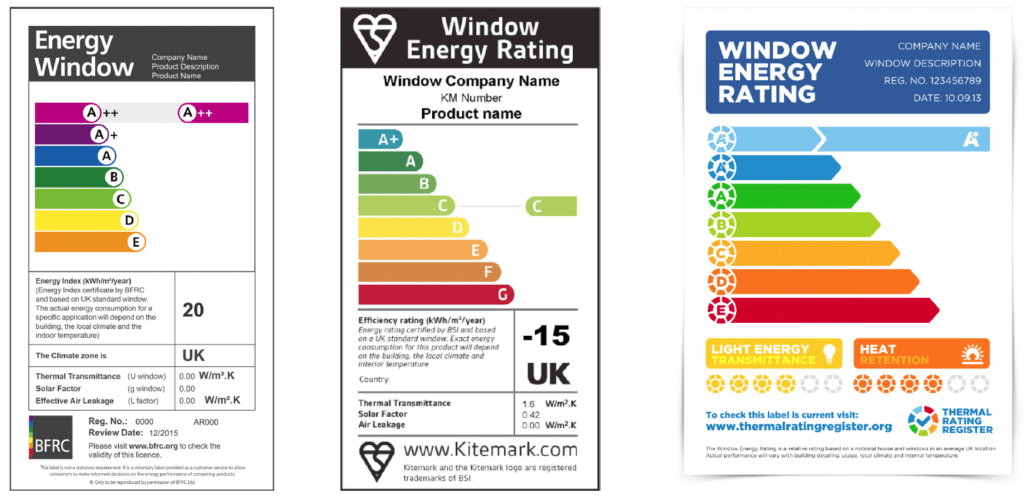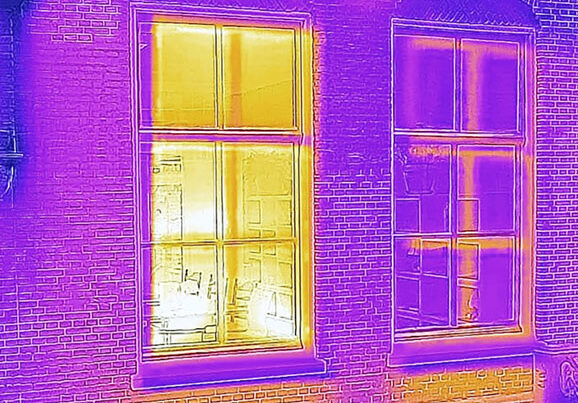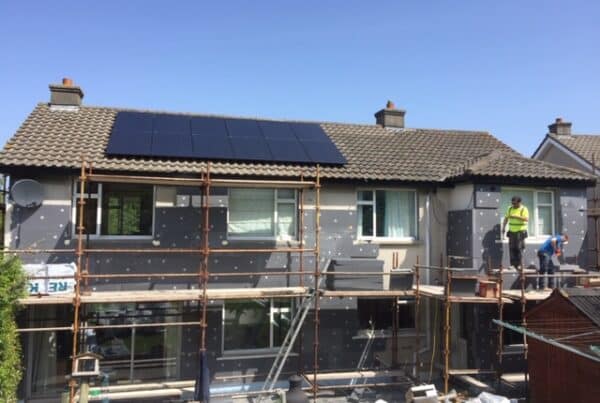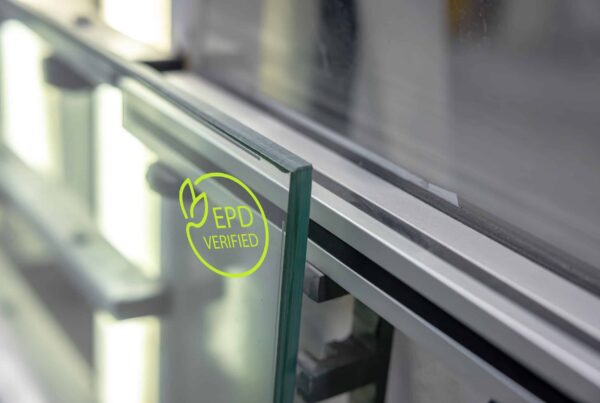How to Make Windows More Energy Efficient
Making your windows more energy efficient can save you up to £155 annually on heating bills while reducing heat loss by up to 33%. Whether you’re dealing with draughty sash windows in a Victorian terrace or considering upgrades for a listed building, this guide explores practical solutions ranging from simple DIY fixes costing under £10 to advanced glazing technologies that transform your home’s thermal performance.
As someone who’s spent years working with heritage properties and modern glazing solutions, I’ve seen firsthand how the right approach to window efficiency can make a dramatic difference. Just last winter, a client in Edinburgh saw their heating bills drop by 40% after we retrofitted their Georgian townhouse with vacuum glazing — all while preserving the original timber frames that conservation officers insisted must remain untouched.
Understanding Window Energy Efficiency Standards in the UK
The British Fenestration Rating Council (BFRC) provides the framework that helps UK homeowners navigate the often confusing world of window energy ratings. Their system, ranging from A++ down to G, considers three crucial factors that determine how well your windows perform: heat loss through U-values, air leakage via the L-factor, and solar gain measured by the G-value.
What many homeowners don’t realise is that U-values below 1.4 W/m²K are now mandatory under Building Regulations Part L for any replacement windows. To put this in perspective, your old single-glazed windows likely have a U-value around 5.8 W/m²K — meaning they’re losing heat nearly four times faster than modern standards allow. It’s like leaving a small window open all winter.
Beyond the basic ratings, there’s the Solar Heat Gain Coefficient (SHGC) to consider. This measures how much of the sun’s warmth gets through your windows — something you want in winter but might want to limit in summer. The trick is finding the right balance for your specific situation. North-facing windows in Scotland have very different needs from south-facing windows in Cornwall.
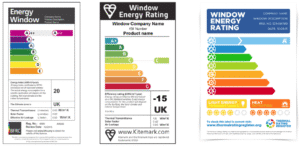
What Types of Energy-Efficient Glazing Should You Consider?
Double glazing revolutionised home insulation when it became mainstream in the 1980s, and for good reason. By trapping air or argon gas between two panes of glass, it creates an insulating barrier that can reduce heat loss by up to 69% compared to single glazing. Modern double-glazed units achieve U-values around 1.2 W/m²K — a massive improvement over single glazing’s 5.8 W/m²K.
Triple glazing takes this concept further, adding a third pane and second gas-filled cavity. While it can achieve U-values as low as 0.8 W/m²K, there’s a catch that Denis Hussein, a glazing specialist I interviewed, highlighted: “Triple glazing units are up to 50% heavier than double glazing”, which can cause serious problems for older window frames. The extra weight often necessitates complete frame replacement, turning what should be a simple upgrade into major construction work.
Low-emissivity (Low-E) coatings represent a clever bit of physics. These microscopically thin metallic layers reflect infrared radiation back into your room while letting visible light through. Think of it as a one-way mirror for heat — keeping warmth inside during winter while reducing solar gain in summer.
| Glazing Type | Thickness | U-value (W/m²K) | Weight | Cost Range |
| Single Glazing | 4mm | 5.8 | Light | £100-200 |
| Double Glazing | 24-28mm | 1.2-1.4 | Medium | £400-600 |
| Triple Glazing | 36-44mm | 0.8 | Heavy | £600-800 |
| Vacuum Glazing | 7.7mm | 0.7 | Light | £500-700 |
Here’s where things get interesting for heritage property owners. Vacuum glazing achieves better thermal performance than triple glazing but in a unit barely thicker than single glazing. By removing all air between the panes and creating a vacuum, it eliminates conduction and convection entirely. The result? U-values of 0.7 W/m²K in a profile slim enough to fit original Victorian sash windows.
How Do Window Frame Materials Impact Energy Efficiency?
Your choice of frame material can make or break your window’s overall performance. UPVC frames dominate the UK market for good reason — they offer excellent insulation through multi-chamber designs that create air pockets within the frame structure. At £160-£1,240 per window, they’re also the most budget-friendly option for whole-house replacements.
The multi-chamber design is ingenious. Each chamber acts as its own insulation barrier, similar to how a wetsuit keeps you warm. Modern UPVC frames can have up to eight chambers, creating multiple thermal breaks that stop heat from escaping through the frame itself.
Aluminium frames present a different challenge. While incredibly strong and virtually maintenance-free, aluminium conducts heat like nobody’s business. That’s why modern aluminium windows incorporate polyamide thermal breaks — strips of low-conductivity material that physically separate the inner and outer frame sections. Without these, your expensive triple glazing would be undermined by heat racing through the frames.
*Insert image of cross-section showing thermal break in aluminium frame here*
Timber frames hold a special place in the UK’s architectural heritage. Wood’s natural cellular structure provides inherent insulation — think of all those tiny air pockets in the grain. Modern timber windows combine this natural advantage with advanced glazing and weather seals to achieve impressive performance. Yes, they cost more (£240-£1,860 per window), but for listed buildings, they’re often the only acceptable option.
Composite frames represent the best of both worlds. By wrapping a timber core in aluminium or UPVC cladding, they deliver timber’s thermal performance with minimal maintenance. The exterior cladding handles whatever the British weather throws at it, while the timber core provides that crucial thermal break.
Should You Upgrade or Replace Your Windows?
The upgrade-versus-replace dilemma faces every homeowner dealing with inefficient windows. If your frames are structurally sound — and this is crucial — upgrading the glazing alone can deliver 70-80% of the benefits at 40-60% of the cost. I’ve seen countless Victorian sash windows given a new lease of life through careful reglazing.
Reglazing involves removing the old glass and fitting new high-performance units into existing frames. For timber frames in good condition, this is often the most cost-effective approach. The key is ensuring the rebates (the grooves that hold the glass) are deep enough for modern glazing. Single-glazed rebates are typically 4-6mm deep, while double glazing needs 24mm or more.
Secondary glazing offers another compelling option, particularly for listed buildings where external changes are prohibited. By installing a second window on the room side of your existing window, you create an insulating air gap that can reduce U-values from 5.7 to 1.87 W/m²K — a 69% improvement. Modern magnetic systems make this surprisingly unobtrusive.
The beauty of secondary glazing extends beyond thermal performance. That air gap between windows provides exceptional acoustic insulation — up to 70% noise reduction according to my measurements. For properties near busy roads or flight paths, this dual benefit makes secondary glazing particularly attractive.
Complete replacement becomes necessary when frames show signs of rot, warping, or structural failure. Look for gaps between the frame and wall, difficulty opening or closing windows, or visible deterioration of the frame material. When replacement is needed, it’s an opportunity to address not just the glazing but the entire window system — frames, seals, and installation quality all impact final performance.
Cost-Effective DIY Methods to Improve Window Efficiency
Before reaching for your chequebook, consider these immediate improvements that can make a noticeable difference. Weather stripping remains one of the most cost-effective upgrades available. For less than £20 per window, quality brush pile seals can eliminate those whistling draughts that make rooms feel colder than they actually are.
The trick with weather stripping is identifying where air actually leaks. On a windy day, hold a lit incense stick near window edges — the smoke will dance wherever air is getting through. Common culprits include meeting rails on sash windows, the gaps around casement windows, and anywhere the frame meets the wall.
Window insulation film might seem like a temporary fix, but don’t underestimate its effectiveness. At £1.50-£4.50 per square metre, it creates an additional air pocket that can reduce heat loss by up to 70% on single-glazed windows. The key is proper installation — any wrinkles or gaps defeat the purpose. Use a hairdryer to shrink the film tight, creating that crucial sealed air layer.
*Insert image of thermal curtains showing honeycomb structure here*
Thermal curtains and blinds offer flexibility that permanent solutions can’t match. High-quality thermal blinds with honeycomb construction can reduce heat loss by 25-33% when properly fitted. The cellular structure traps air just like double glazing, while reflective backings bounce radiant heat back into the room.
Here’s something most guides won’t tell you: the gap between curtain and window is critical. Too close and you lose the insulating air layer; too far and cold air circulates behind the curtain. Aim for a 10-15cm gap, and ensure curtains extend well beyond the window frame to prevent air movement around the edges.
Draught excluders might seem old-fashioned, but they’re remarkably effective. Sash windows particularly benefit from brush strip excluders fitted to the meeting rail and sides. The Energy Saving Trust estimates comprehensive draught-proofing can save £50-£85 annually — not bad for a weekend’s work.
What Financial Support Is Available for Window Upgrades?
The financial landscape for window improvements in the UK has evolved significantly. While specific window-only grants are limited, broader schemes can help fund comprehensive upgrades. The Home Upgrade Grant targets properties with EPC ratings of D or below, potentially covering window replacements as part of whole-house improvements.
For those in Scotland, the situation is particularly favourable. Interest-free loans up to £8,000 are available for glazing improvements, with grants covering up to 75% of costs (maximum £7,500). Rural properties benefit from “rural uplift” provisions, increasing maximum grants to £9,000 — recognition of the higher costs and limited contractor availability in remote areas.
The key to accessing support is understanding eligibility criteria. Most schemes require: – An Energy Performance Certificate (EPC) assessment – Use of certified installers (FENSA registered for windows) – Compliance with current Building Regulations – Sometimes, specific income thresholds or property characteristics
Beyond government schemes, consider the long-term economics. Energy-efficient windows typically save £110-£155 annually on heating bills. Over a 20-year lifespan, that’s £2,200-£3,100 in savings — often exceeding the net cost after grants.
Property value increases provide another financial consideration. Research indicates energy-efficient windows can boost property values by 2-5%. For a £300,000 home, that’s a potential £6,000-£15,000 increase — far exceeding the cost of most window upgrade projects.
Professional Installation vs DIY: Making the Right Choice
The allure of DIY window work is understandable — professional installation typically adds 20-30% to project costs. However, windows are unforgiving. Poor installation doesn’t just compromise performance; it can cause structural damage through water ingress and thermal bridging.
Professional installers bring crucial expertise in thermal bridge prevention. These invisible heat highways occur wherever there’s a break in insulation — typically around window frames. Proper installation includes careful positioning of insulation and sealing to eliminate these bridges. Get it wrong, and you’ll see condensation, mould, and heat loss that negates your expensive new windows.
Building Regulations compliance is another compelling reason for professional installation. Certified installers can self-certify their work, avoiding the need for Building Control applications that can add weeks and hundreds of pounds to your project. They also understand the nuances of different property types — what works for a 1960s semi-detached won’t suit a Georgian terrace.
That said, certain improvements suit competent DIY implementation. Weather stripping, insulation film, and thermal blinds are well within most homeowners’ capabilities. The key is honest assessment of your skills and the complexity of the task. A badly fitted weather strip is easily replaced; a poorly installed window might require expensive remedial work.
Professional installation also provides warranty protection. Most manufacturers require certified installation to maintain product warranties — crucial for high-value items like vacuum glazing with 20-year guarantees. The peace of mind alone often justifies the additional cost.
Frequently Asked Questions
What’s the most cost-effective way to improve window efficiency in a rental property?
For renters, removable solutions work best. Magnetic secondary glazing panels (around £50-£100 per window) can be taken with you when you move. Combined with thermal blinds and draught excluders, you can achieve significant improvements without permanent modifications. Always check your tenancy agreement, but most landlords welcome reversible improvements that don’t alter the property structure.
How do I know if my double glazing has failed?
Failed double glazing shows telltale signs: condensation between the panes (not on them), a white or grey hazy appearance, or visible moisture droplets inside the unit. This indicates seal failure, allowing moisture into the cavity and compromising insulation. While still better than single glazing, failed units should be replaced to restore full thermal performance.
Can I install vacuum glazing in Grade II listed sash windows?
Historic England has approved vacuum glazing for use in listed buildings because its ultra-thin profile (7.7mm) matches original glass thickness. This means you can achieve U-values of 0.7 W/m²K without altering the window’s appearance or structure. Always consult your conservation officer, but vacuum glazing often provides the perfect solution for heritage properties seeking modern performance.
What’s the real-world difference between A and A++ rated windows?
A-rated windows achieve energy neutrality — they lose as much heat as they gain from solar radiation. A++ windows actually contribute net heat gain to your property. In practical terms, this might mean an extra £20-30 annual saving, but the cumulative effect over the window’s lifetime is significant. For north-facing windows that receive little direct sunlight, the difference is less pronounced.
Should I prioritise windows or wall insulation for energy efficiency?
While windows typically account for 10-25% of heat loss, walls can represent 35%. However, window improvements often provide better returns in comfort terms — eliminating draughts and cold spots near windows dramatically improves how warm a room feels. If budget allows, address both, but if choosing one, consider which causes you more immediate discomfort.
Conclusion
Improving your windows’ energy efficiency doesn’t require an all-or-nothing approach. From simple draught-proofing that costs pennies to advanced vacuum glazing that rivals wall insulation performance, there’s a solution for every budget and building type. The key is understanding your specific needs — a Victorian terrace in Edinburgh faces different challenges than a 1970s bungalow in Brighton.
Start with the basics: identify where heat is escaping, seal the obvious gaps, and consider temporary measures like thermal blinds. When you’re ready for permanent improvements, weigh the benefits of upgrading versus replacement carefully. And remember, in our experience working with heritage properties across the UK, preserving original features while achieving modern performance isn’t just possible — it’s increasingly the preferred approach.
Whether you’re looking to cut energy bills, improve comfort, or meet conservation requirements, the path to better window efficiency is clearer than ever. Why not start with a simple draught test this weekend? You might be surprised how much difference a few strategic improvements can make. For those ready to explore advanced solutions like vacuum glazing that combines heritage aesthetics with cutting-edge performance, the future of window efficiency is already here.

